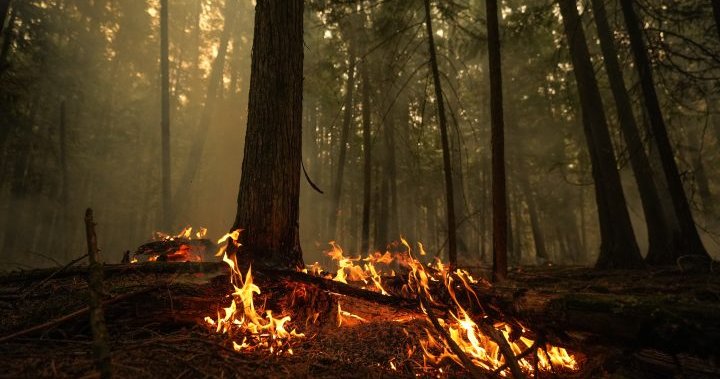North Shuswap resident Kyle Boppre offers a simple explanation when asked why he defied an evacuation order issued as a wildfire bore down on his neighbourhood.
“It’s just, I guess, in my blood to fight,” he said. “We were able to save our home.”
Boppre and others in the small communities that dot the Shuswap region’s waterfront felt like they were on their own, with no choice but to take the firefight into their own hands.
But authorities say that their actions put their lives at risk and imperil firefighting strategies. Emergency Management Minister Bowinn Ma said Wednesday the unwanted presence of evacuation scofflaws could prevent tactics such as water-bombing or controlled burns.

The 410-square-kilometre Bush Creek East in the Shuswap has resulted in evacuation orders being placed on more than 3,000 properties.
Most evacuation orders have been obeyed, but holdouts like Boppre and others stayed to fight the fires and believe the official response has been inadequate, incompetent, or non-existent.
It’s not just officials who are unimpressed.
Trent Tucker, a professor at Thompson Rivers University, lost his home to the fires near Little Shuswap Lake.
He said it’s entirely irresponsible for people to stay back in evacuation order zones, and he’s “extremely upset” by stories “lionizing” those who have defied evacuation orders.
“Our home is completely gone and yet we have these dummies that stuck around behind and the news is treating them like some sort of heroes,” he said.
“They got lucky it wasn’t like the case in West Kelowna where people stayed back and then they had to get rescued behind fire lines by firefighters.”
Boppre blames authorities.
He said a friend who tried to return to the area to join the fire fight encountered a police roadblock and when he tried to turn around he was chased down, his truck confiscated, and he was not allowed to return to his property in an evacuation zone.
The truck was filled with supplies including food, water, and gasoline, and he was “clearly not a criminal,” Boppre said.
“The government folks, the provincial folks that are trying to quote unquote save our properties,” he added. “Clearly they’re not here.”
Boppre, who runs a marine maintenance and scuba diving business, said members of the community have local knowledge of the geography, but officials from outside don’t seem to value it.
The community bonds are extremely strong among those who’ve stayed behind, Boppre said.
“We can’t wait around for that help that’s supposed to be here and watch our homes burn,” he said. “If I did evacuate when they wanted me to, (I) definitely would have lost my entire livelihood.”

Ma said that she recognized how difficult it is for people to leave their homes, but stressed the importance of following evacuation orders.
“Evacuation orders must be followed. They are not suggestions, they are the law,” she said. “When unauthorized people are in evacuation areas, it escalates the danger involved for everyone.”
Ron Jules, an elder with the Adams Lake Indian Band, lives down river from the community of Chase.
Jules, like Boppre, stayed behind despite an evacuation order and kept a sprinkler going on his roof.
“We can’t evacuate because we have to look after our home,” he said, calling it “all we got.”
Jules said the band had put sprinklers on several community buildings including the school and health centre. He estimated about 70 per cent of the community complied with the evacuation order.
At a Columbia Shuswap Regional District briefing in Salmon Arm, board chairman Kevin Flynn said “it’s inexcusable” that people are staying behind in the evacuation zones and tampering with equipment.

Flynn said there were reports that sprinklers protecting a wooden bridge in the Shuswap area were removed at least three times.
“I just can’t imagine anybody would think that is the right thing to do,” he said. “That is dangerous.”
Forrest Tower with the BC Wildfire Service said Tuesday that the Shuswap area fire quickly turned into an inferno, likely never before witnessed in B.C.
“This is one of, if not the most, significant fire events we have ever witnessed in B.C.,” he said. “We had a fire that went from a 7,000-hectare fire, that went 20 kilometres south in under 12 hours and is now a 41,000-hectare fire. That is a force of nature similar to a tornado, similar to an earthquake or a tsunami.”
Tower urged residents to leave firefighting equipment where it is.
“We have to have that equipment, the pumps, the hoses, the sprinklers, all that has to be there,” he said. “That gear, you might think you are doing something to help yourself, your neighbours, others, but I would really just urge if you could leave it to the professionals. They do have a plan.”
— with files from Nono Shen, Dirk Meissner, and Chuck Chiang.



